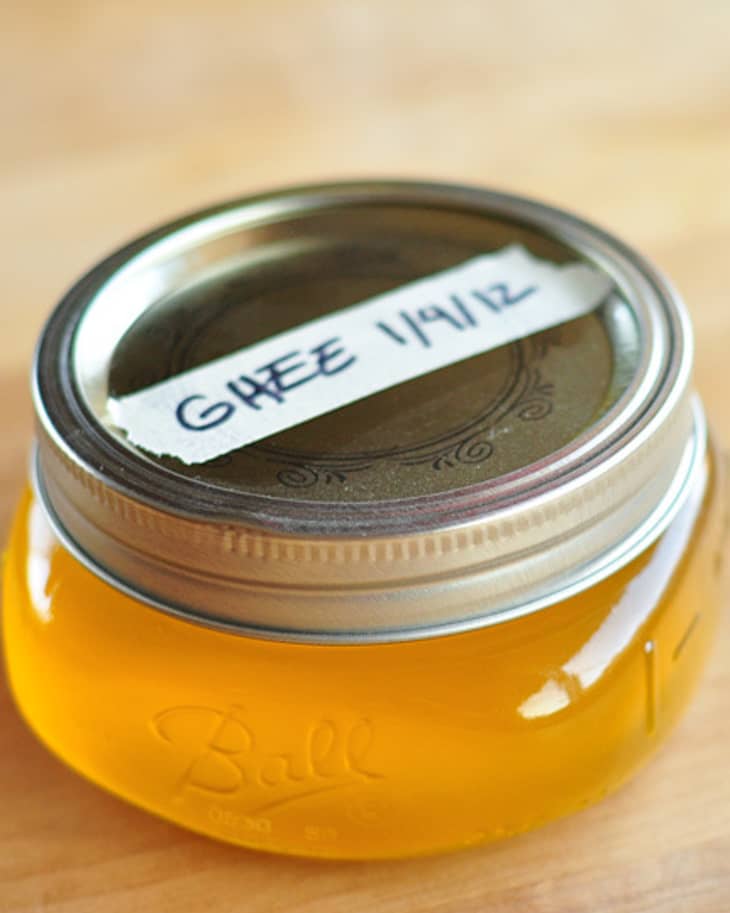What Is Ghee?
I grew up hearing rumblings of the word “ghee” from my aunts at an early age. When I’d visit for dinner, I’d see them grab a big spoonful of it from a jar by the stove before cooking practically everything. But that’s really where my knowledge stopped — I never understood quite what it was, and perhaps was too afraid to ask.
To me, ghee was a magical Indian ingredient that was only used to cook Indian food, which wasn’t whipped up often in my Indian-Irish household. Nowadays, however, the stuff is everywhere. And I’ve learned that while it certainly is a magical ingredient, it’s not at all something to be afraid of.
What It Is and How to Make It
Butter is composed of three ingredients: butterfat, milk solids, and water. Remove the milk solids and water, and you’re left with ghee, a type of clarified butter. The absence of milk solids leaves ghee with a much higher smoke point, which makes it a lot easier to cook with over high heat. Its smoke point is actually higher that most cooking oils, like grapeseed, canola, and coconut oil.
Ghee is made by melting butter over medium-low heat until simmering. As the water in the butter slowly evaporates, the milk solids sink to the bottom of the pan. After all the water has evaporated (the butter will stop making a sputtering sound), it’s removed from the heat, and poured through a cheesecloth-lined strainer to remove the milk solids. You’re left with pure butterfat (aka clarified butter).
What makes ghee different than regular clarified butter is that the butter is simmered just a tiny bit longer, to the point where the milk solids just start to brown. It’s strained again to removed those lightly caramelized solids for pure butterfat.
Because the milk solids are slightly toasted when making ghee, it has a more golden color than regular clarified butter and is a bit deeper in flavor. It’s not as rich and fragrant as brown butter, where the milk solids are cooked even longer and often not strained out, but it does deliver a mellow nuttiness.
How to Store and Use It
Pour ghee into a heatproof jar and it will last quite a while. It doesn’t go rancid as quickly as regular butter, so it’s OK to leave it out at room temperature, away from light and heat, for about three months. To extend its life, store it in the fridge, where it can last for up to a year. Like coconut oil, it will harden in the fridge, but softens up relatively quickly when left out on the counter for five to 10 minutes. Use it like you would any cooking fat — roast vegetables with it, toast your rice in a little before cooking it, and even fry your eggs in it.
